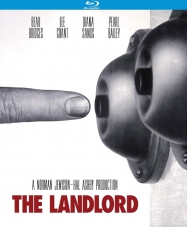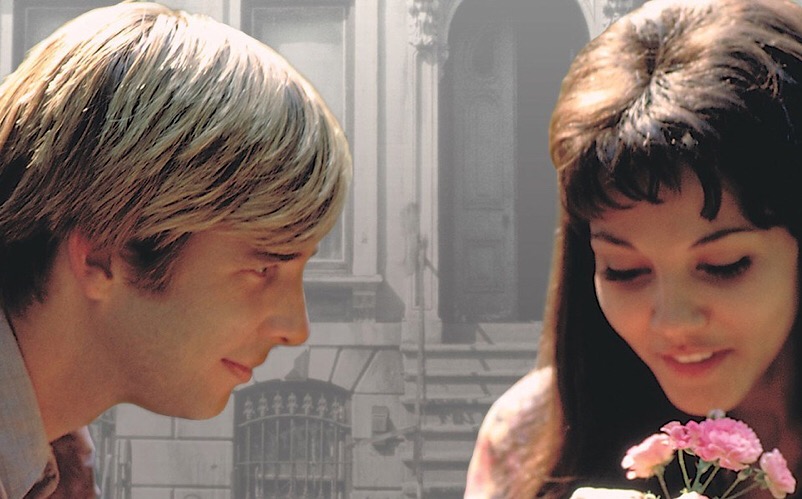by Mark Brinkerhoff
 50 years ago today the one and only Hal Ashby, then an Oscar-winning film editor (In the Heat of the Night, The Russians Are Coming! The Russians Are Coming!) made his directorial debut with the release of The Landlord. Based on a 1966 novel and starring an almost inconceivably baby-faced Beau Bridges, its plot is fairly run-of-the-mill today but must’ve seemed quite daring for the time: A young man named Elgar (?!), who comes from wealth and lives with his parents at their Long Island estate, decides to buy a “rundown” tenement house in the dicey, gentrifying neighborhood of Park Slope. (Imagine!)
50 years ago today the one and only Hal Ashby, then an Oscar-winning film editor (In the Heat of the Night, The Russians Are Coming! The Russians Are Coming!) made his directorial debut with the release of The Landlord. Based on a 1966 novel and starring an almost inconceivably baby-faced Beau Bridges, its plot is fairly run-of-the-mill today but must’ve seemed quite daring for the time: A young man named Elgar (?!), who comes from wealth and lives with his parents at their Long Island estate, decides to buy a “rundown” tenement house in the dicey, gentrifying neighborhood of Park Slope. (Imagine!)
The tenants are black, he’s white, and his scheme is to evict them all so he can convert the property into something posh—a vanity project, if there ever was one.

Things do not go according to (his) plan...
His landlord’s tenants take an instant disliking (or at least skeptical stance) to him. As Ashby knew how to cast a movie, they’re played by a powerhouse group of actors: Pearl Bailey, Mel Stewart, Louis Gossett Jr. and the luminous Diana Sands. The tension between tenants and landlord turn, slowly, into a detente. Connections tantamount to friendship form. Living conditions improve—for some more than others. Neighborhood hoodlums and run-ins fade. The landlord even enters into an interracial relationship with a light-skinned woman he meets at a club. All the while the landlord's disapproving family thinks him to be out of his mind and urges him to find a more suitable, reputable line of work.

This being a dramedy, the darker moments are interspersed with light, emanating largely from Lee Grant as Elgar’s mother. She plays it big and rather broad, but also has an endearing, drunken scene with a warm, inviting Bailey while visiting Park Slope.
And then there’s the fractured, discomfiting triangle of Sands, Gossett as her mentally unbalanced husband, and Bridges, whose Elgar has a one-night tryst that results in her character’s unplanned pregnancy. In these scenes are where Sands really shines. She’s poignant and heartbreaking; that she opts to have, then give up, Elgar’s baby, despite the disastrous effects it has on her husband’s fragile psyche, seems unreal but also a dynamite showcase for Sands’ gifts. How tragic that this talent, not even 40, died shortly after The Landlord was released. What a loss; one can only imagine the actressing Sands could’ve had in store.

It’s hard to overstate how incredible Ashby’s ‘70s run was, and still largely holds up today. An intuitive, sensitive director, he followed The Landlord with future cult classic, Harold and Maude (1971). Then, in quick succession, came the critically acclaimed The Last Detail (1973); and Oscar-winning successes Shampoo (1975), Bound for Glory (1976), Coming Home (1978), and Being There (1979). In fact, Ashby is one of only a handful of directors (including Elia Kazan, Martin Scorsese and William Wyler) to direct actors to Academy Awards in all four acting categories—a feat accomplished over the course of three films in just five years.
As with many, many films of its era, The Landlord can be an elusive watch. (It is on DVD and Blu-ray, and there’s a grainy, chopped up video of it floating around YouTube.) And, despite ending on a rather absurd note—you have to see a man madly driving a sports with a newborn in a suitcase in the passenger seat (!!!) to believe it—coupled with some questionable dialogue for modern audiences, The Landlord nevertheless remains a wild, worthwhile time capsule.
See it for the Ashby, Bailey, Lee and Sands of it all.
Related Article:
The Landlord was a big hit here when we held 1970 Supporting Actress Smackdown